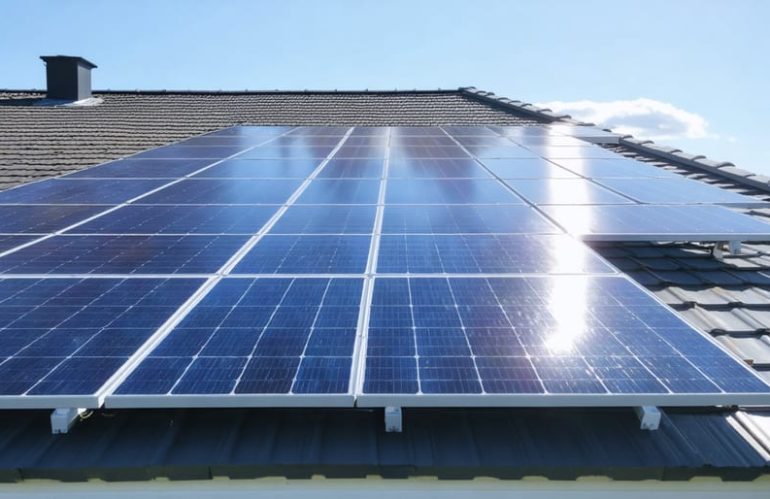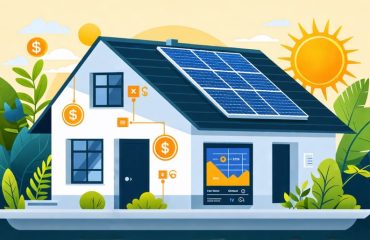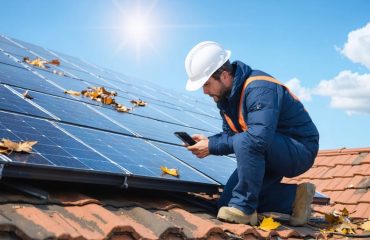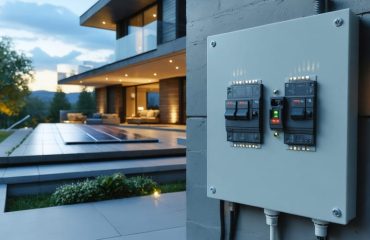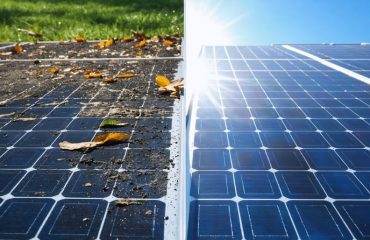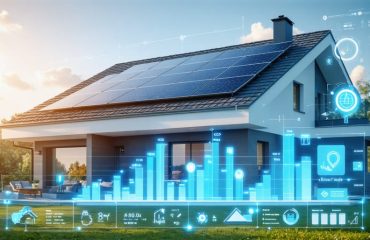Regular solar system maintenance extends your installation’s lifespan by up to 10 years while helping boost your system’s efficiency by 20-30%. Protect your investment through quarterly panel inspections, checking for debris accumulation, microcracks, or loose connections. Monitor your system’s performance data monthly through your inverter dashboard to catch efficiency drops early. A well-maintained solar installation delivers optimal energy production year-round, maximizing both environmental impact and financial returns. Simple preventive care, from seasonal cleaning to prompt repairs, ensures your solar panels continue generating clean, cost-effective power for decades. This practical guide walks you through essential maintenance steps, helping you maintain peak performance without requiring technical expertise.
Essential Components of Your Solar System Maintenance Plan
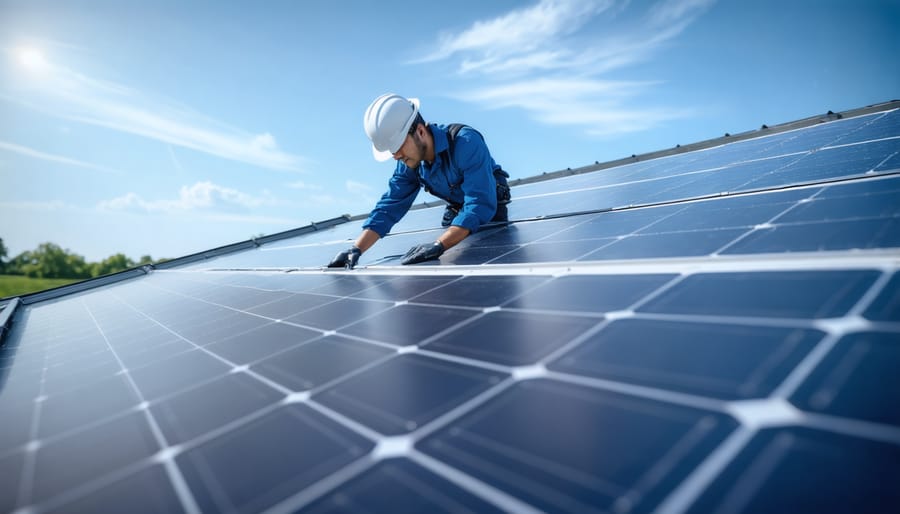
Visual Inspections: What to Look For
Regular visual inspections are your first line of defense in maintaining your solar system’s performance. Start by checking your panels for any obvious physical damage, such as cracks, discoloration, or loose components. Pay special attention to the edges and corners where damage typically occurs first.
Look for any debris accumulation, including leaves, bird droppings, or dirt buildup that could shade your panels and reduce efficiency. In snowy regions, ensure panels aren’t covered by snow during winter months. Check that vegetation near your panels hasn’t grown to cast shadows on them.
Examine the mounting hardware for signs of rust or loose bolts, and ensure your panels remain firmly attached at their original tilt angle. Keep an eye on your inverter’s display panel – a green light typically indicates normal operation, while red or orange lights may signal issues requiring attention.
Don’t forget to inspect the wiring for signs of wear, animal damage, or loose connections. Look for any signs of water damage around electrical components, especially after heavy rains. If you spot anything concerning, it’s best to contact a professional for a thorough assessment.
Performance Monitoring Made Simple
Modern technology has made tracking your solar system’s performance easier than ever. Installing a solar monitoring system is your first step toward hassle-free performance tracking. Most current solar installations come with user-friendly apps that display real-time energy production, consumption, and savings right on your smartphone.
These monitoring tools typically show daily, weekly, and monthly energy generation patterns, helping you spot any unusual dips in performance quickly. You can easily compare current output with historical data, ensuring your system maintains peak efficiency throughout the year.
Many monitoring apps also send automatic alerts when they detect potential issues, letting you address problems before they affect your energy savings. Some advanced features include weather forecasting integration, showing how environmental conditions impact your system’s performance, and detailed financial tracking that calculates your exact energy savings.
By regularly checking these metrics, you can verify that your solar investment is performing as expected and identify maintenance needs early on. This proactive approach helps maintain optimal system efficiency and maximizes your long-term energy savings.
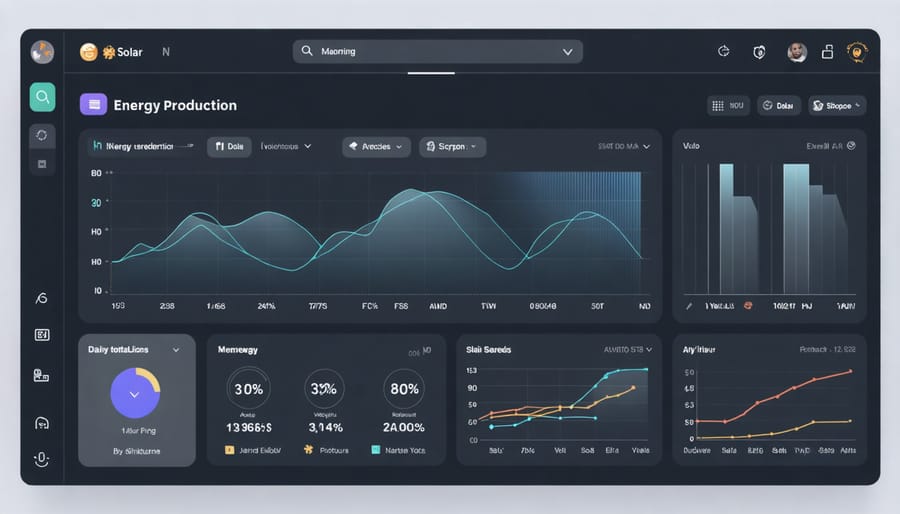
Seasonal Maintenance Calendar
Spring and Fall Cleaning Essentials
Spring and fall are crucial times for solar system maintenance, as these transitional seasons help prepare your system for extreme weather conditions. In spring, focus on removing winter debris and checking for any damage caused by snow or ice. Clean your panels thoroughly using soft water and a non-abrasive cloth to remove accumulated grime, pollen, and salt residue.
Inspect mounting hardware and tighten any loose connections that may have been affected by winter freeze-thaw cycles. Check your system’s performance metrics to ensure it’s operating at optimal efficiency as sunlight hours increase.
Fall maintenance prepares your system for winter challenges. Clear away fallen leaves and branches that could scratch panels or create shade spots. Trim back overhanging tree branches that have grown during summer to prevent winter snow accumulation and maintain maximum sun exposure.
During both seasons, inspect roof penetrations and flashing to prevent water damage, clean or replace air filters in inverter cooling systems, and verify that monitoring systems are functioning correctly. These bi-annual checkups help maintain peak performance year-round while extending your system’s lifespan.
Summer and Winter Care Tips
Your solar system’s maintenance needs change with the seasons, requiring specific attention during summer and winter months. In summer, gently spray panels with water during early morning or evening to remove dust and maximize efficiency. Keep grass and vegetation trimmed to prevent shading, and ensure proper ventilation around your inverter to prevent overheating.
Winter brings its own challenges. After snowfall, use a soft-bristled brush with an extended handle to carefully remove snow from panels – never use metal tools or hot water, as these can damage the system. Check that your panels are angled optimally to prevent snow accumulation and maximize limited winter sunlight.
During both seasons, monitor your system’s performance through your monitoring app or interface. Sudden drops in production could indicate weather-related issues needing attention. Schedule professional inspections at the start of each season to ensure your system is prepared for the upcoming weather changes. This proactive approach helps maintain optimal performance year-round while protecting your investment.
Remember to always prioritize safety when performing seasonal maintenance, and consult your system’s manual for specific seasonal care recommendations.
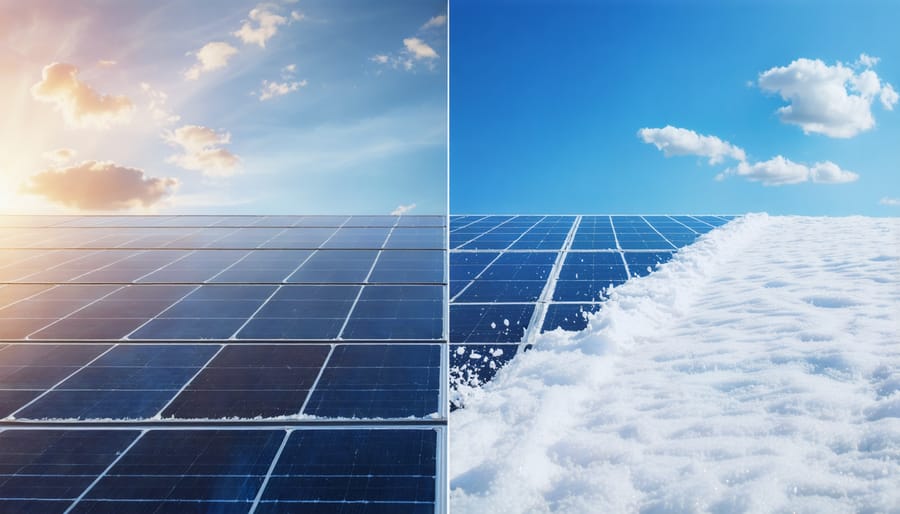
DIY vs. Professional Maintenance
While solar systems are generally low-maintenance, knowing what you can handle yourself versus when to call a professional is crucial for system longevity. As a homeowner, you can safely perform several basic maintenance tasks.
DIY-friendly tasks include regular visual inspections, basic panel cleaning, monitoring system performance through your inverter display or app, and checking for obvious debris accumulation. These routine checks can help you spot common maintenance issues early on.
However, certain situations require professional intervention. Always contact a certified solar technician for:
– Electrical components repairs or replacements
– Roof-mounted system adjustments
– Inverter troubleshooting beyond basic resets
– Annual professional inspections
– Complex cleaning situations (especially on steep roofs)
– System optimization and efficiency checks
Safety should always be your primary concern. If you’re uncertain about performing any maintenance task, it’s better to contact a professional. Most solar installers offer maintenance packages that include regular inspections and cleaning services, which can be a worthwhile investment for busy homeowners or those less comfortable with DIY maintenance.
Remember to maintain detailed records of both your DIY maintenance activities and professional service visits. This documentation can be valuable for warranty claims and tracking system performance over time.
Regular maintenance of your solar system is a small investment that pays significant dividends. By following a consistent cleaning schedule, monitoring system performance, and addressing issues promptly, you’ll maximize energy production and extend your system’s lifespan. Remember, well-maintained solar panels can operate efficiently for 25+ years, reducing your carbon footprint while providing reliable, cost-effective power for decades to come.

